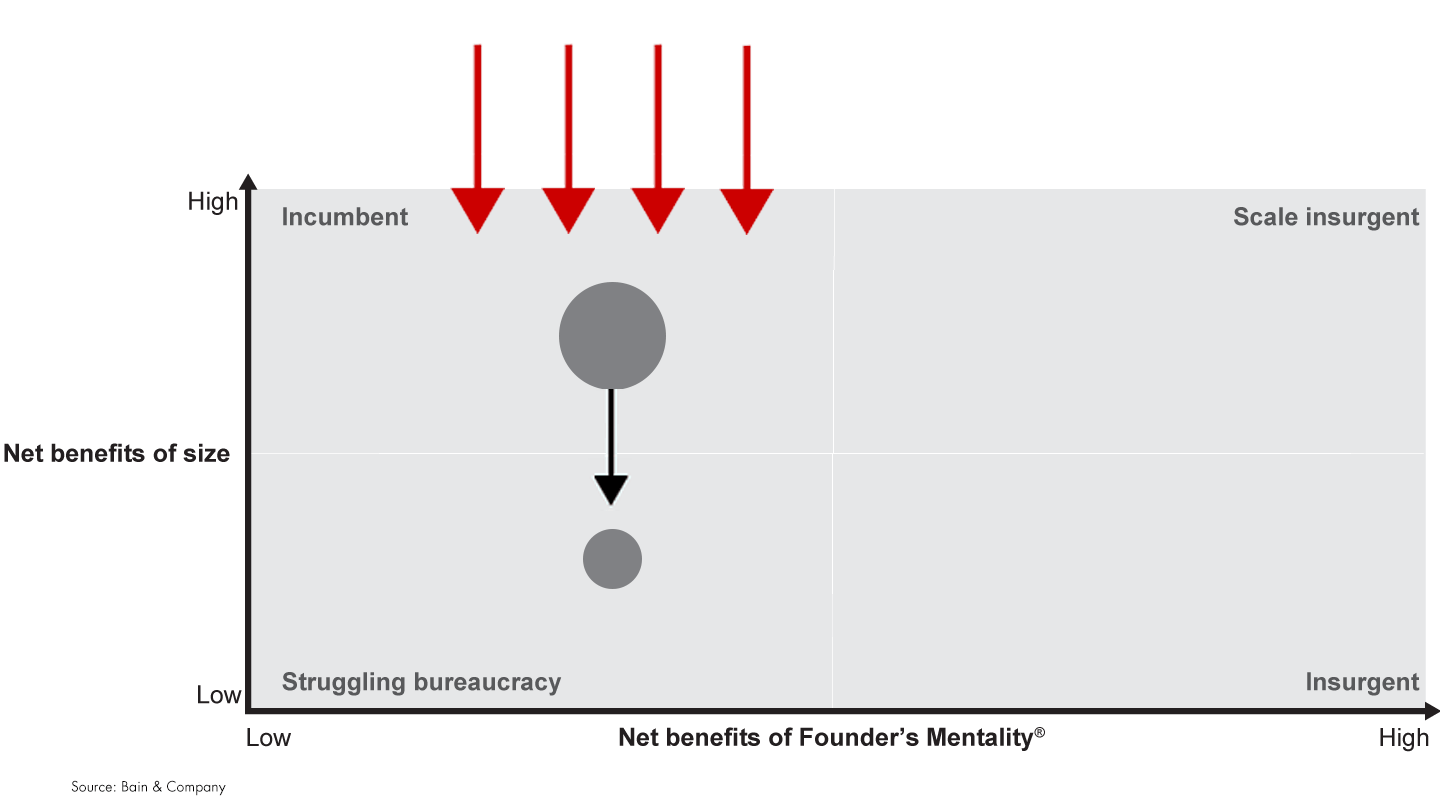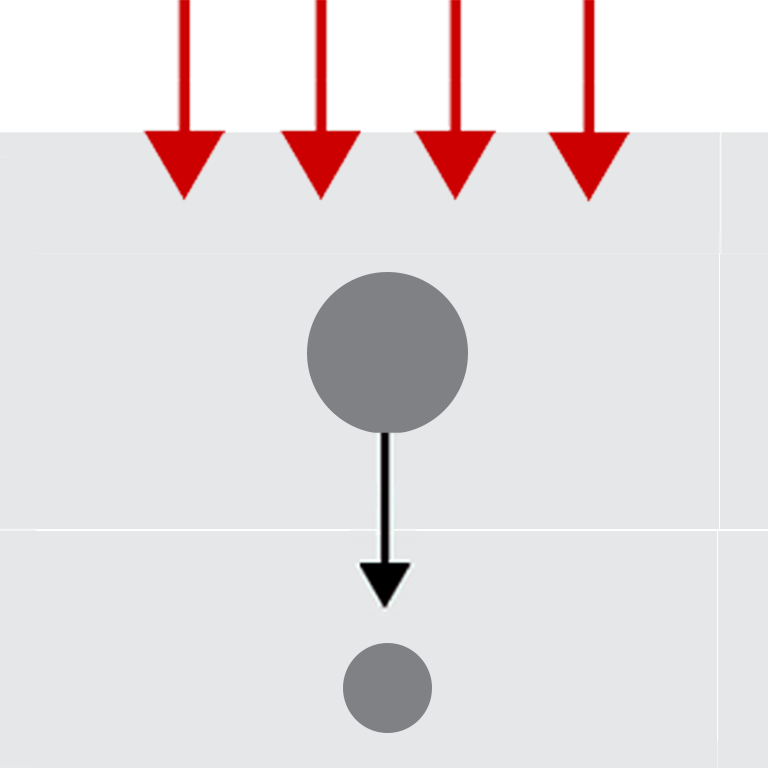Founder's Mentality Blog
The power of incumbency can be formidable for a company that remains focused on its core mission. But just as insurgent companies encounter a predictable set of forces that erode the Founder’s Mentality® as they grow, large multinationals struggle against forces that threaten to turn the power of incumbency into the pain of bureaucracy. We refer to those forces as the southward winds.


Insurgent companies are on a mission. They gain energy from a nobler purpose—usually defined by the founder—that provides the organization a rallying point and lends clarity to strategy and decision making.
But the larger a company becomes, the harder it is to create a shared sense of mission. Companies at the top have no common enemy. There is no hill to take because they are at the peak looking down. They have no reason to transform the industry they dominate and no better proposition in an industry where they set the standard. Instead, bloodless metrics dominate strategy discussions. "We want to deliver best-in-class total shareholder return" or "We want to outperform our peers on margin" replaces "We exist to disrupt our industry by consistently delighting our most important customers."
Once the objective becomes delivering abstract numbers for distant stakeholders, it's easy to lose focus. The organization drifts toward spending its energy maintaining the status quo rather than figuring out how to innovate on behalf of dissatisfied customers. In our view, that leads to an unfortunate tipping point for incumbents. It comes when a company's best employees realize that they're spending too much time fighting the future rather than using their talents and enthusiasm to build a better one.

About the Founder's Mentality
The three elements of the Founder's Mentality help companies sustain performance while avoiding the inevitable crises of growth.
How can leaders revive a company's nobler mission? In most cases, it requires rediscovering the company's founding principles and adapting them for a contemporary context. That serves as the basis for a clear set of nonnegotiables that the company—from the leaders to the front line—can once again rally around. For Lego, it meant digging through the files to find the original founder’s "Principles of Play" and rebuilding a new company that was more faithful to its past. For the leaders of a large Asian bank, it began with discovering that they still had their very first customer. The team then worked hard to discover what it was in that relationship that had kept the customer loyal.
In some instances, the nobler mission stems not from a previous era but from new realities. The transformation at De Beers, for instance, involved moving from an old way of competing (based more on upstream leadership in the industry) to a new way (based more on downstream competition). But even if the strategy is new, we’ve learned that its implementation almost always taps core strengths that trace to the insurgency period. As De Beers reorganized to meet disruptive new market realities, it still relied on its long-held position as the diamond authority, its deep relationships with consumers and its powerful alliances with producers in southern Africa. The key was maintaining focus on the company's core business while gaining a new sense of purpose by forcing it to adapt to changing conditions.

Founder's Mentality®: The Southward Winds
Large multinationals often struggle against forces that threaten to turn the power of incumbency into the pain of bureaucracy.
Founder's Mentality®, Great Repeatable Models® and Repeatable Models® are registered trademarks of Bain & Company, Inc.